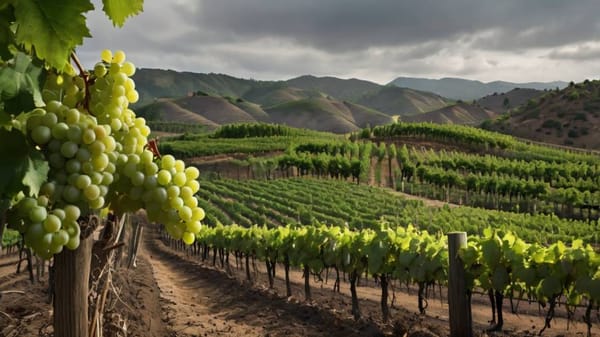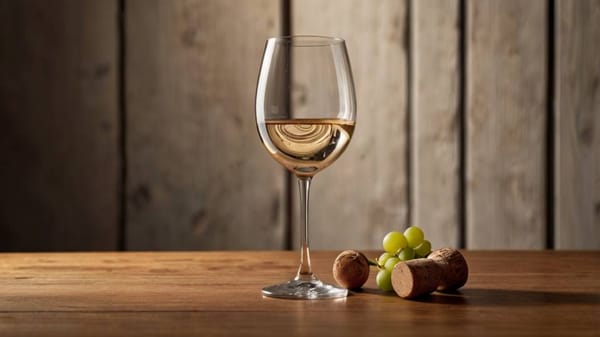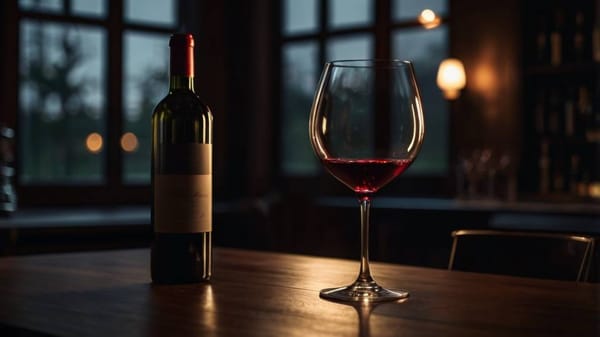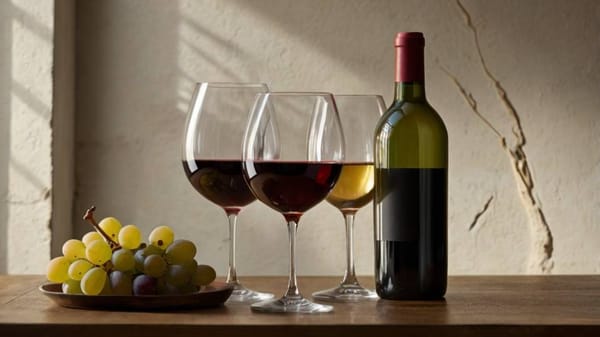Why Rosé Works with Almost Everything
Unlock why rosé pairs with nearly everything. Learn how it teaches texture, acidity, and confidence to anyone starting their wine journey.
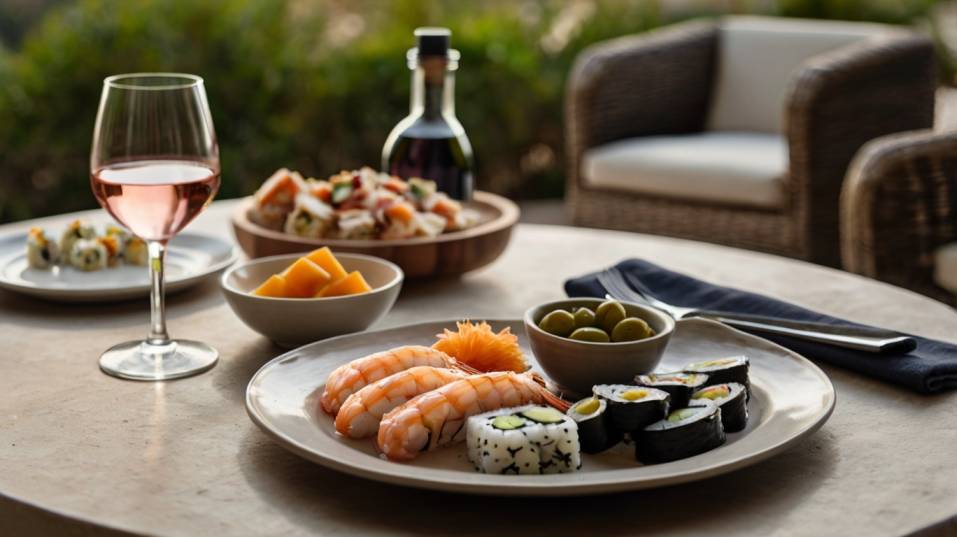
What if one wine could adapt to almost any dish, occasion, or mood—and actually teach you how to understand wine better? Rosé can. For curious drinkers just starting their journey, rosé offers a rare balance of approachability and depth.
It’s not about trends or color—it’s about feel. Learn to spot acidity, texture, and tone, and you’ll unlock smarter, more confident choices across the board. Rosé isn’t just easy to love—it’s designed to make you a sharper taster.
Rosé Isn’t a Style. It’s a Method—and a Mindset.
The biggest misconception about rosé is that it’s one thing: a pale-pink, fruity summer drink. But real rosé defies a fixed category.
It’s a method—usually involving limited skin contact between red grapes and their juice, just enough to extract color, phenolics, and character without making a red wine.
And like any winemaking method, the outcome depends entirely on the grapes used, the soil they’re grown in, and the decisions made in the cellar. Rosé can be made from almost any red variety.
That’s why you’ll find Provençal blends with Grenache and Cinsault that taste light and saline; Pinot Noir rosés from Sancerre or Oregon that echo cherries and crushed stones; or deeper, savory expressions from Tavel or Spain that can stand up to grilled meats and smoked paprika.
There are even serious, structured rosés made from Syrah or Nebbiolo that benefit from a bit of bottle age.
The takeaway: you don’t need to memorize grapes or regions to appreciate rosé—you need to pay attention to how it behaves.
That means looking beyond the color and identifying the elements that define the drinking experience: acidity, weight, tannin, and fruit profile.
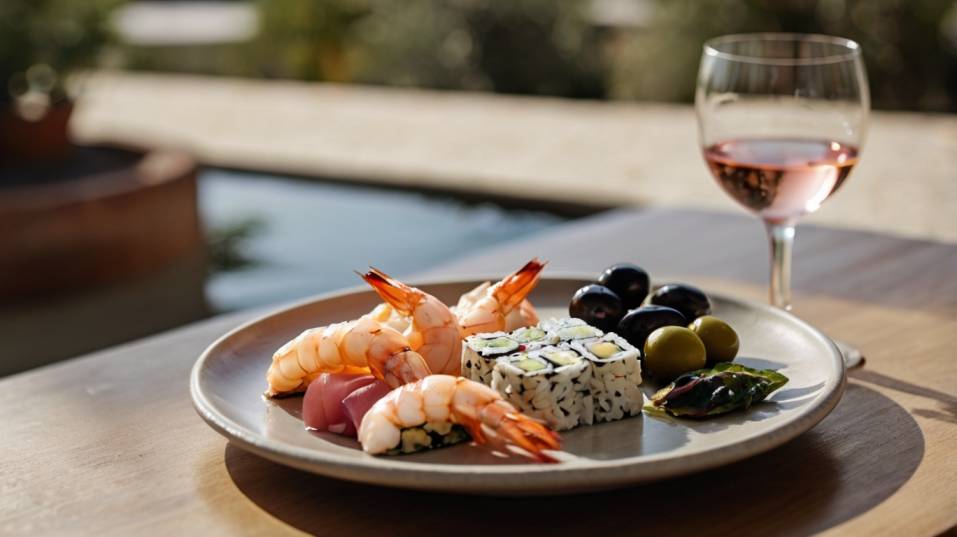
Acidity: Rosé’s Secret Engine
Acidity is often misunderstood by new wine drinkers because you don’t “see” it—you feel it. That mouthwatering sensation, like biting into a green apple or a lemon wedge? That’s acidity.
And in rosé, it’s the secret that keeps everything in motion. It brightens the fruit, refreshes the palate, and cuts through fat, salt, and spice like a clean line.
This is why rosé excels in situations where other wines fall flat. Fried food? Covered. Creamy sauces? Handled.
Sushi, mezze, or a plate of charcuterie with half a dozen clashing textures and temperatures? No problem. The acidity lifts and refreshes with every bite, so your palate never dulls.
When tasting rosé, tune into this liveliness. A good bottle should feel crisp and clean on the finish, even if the fruit is lush.
If a rosé leaves your mouth feeling heavy or sticky, it’s likely missing the acid backbone that makes great rosé so versatile.
Texture: The Real Indicator of Range
If acidity is the engine, texture is the terrain. It's what allows rosé to move across food categories and hold its own, whether you're sipping with a snack or building out a full pairing.
Texture comes from grape skins, aging techniques, lees contact, and alcohol level. It's also where rosé becomes tactile—something you feel, not just taste.
Lighter rosés tend to be smooth and slippery, ideal with delicate flavors: oysters, fresh herbs, soft cheeses. More structured rosés, especially those aged on lees or made from thicker-skinned grapes, show a subtle grip or weight on the palate.
This gives them the ability to stand up to grilled fish, roasted poultry, root vegetables, even a spiced lentil dish. Think of texture as the bridge between wine and food. A silky rosé might echo the creaminess of a burrata.
A slightly grippy one could latch onto a smoky char from the grill. The more you notice texture, the more confidently you can play with contrast and harmony in pairings.
Fruit Character: Clarity Over Complexity
Rosé is often described in terms of its fruit—strawberry, watermelon, raspberry, citrus, peach.
While these notes can be helpful for recognizing style, don’t get lost chasing flavor matches. What matters more is the tone of the fruit. Is it bright or soft? Fresh or jammy? Linear or round?
Fruit tone gives you pairing direction. Tart red berries suggest leaner foods with acidity of their own—tomatoes, goat cheese, vinaigrettes.
Melon or stone fruit tones point toward milder fare—cured meats, grains, or dishes with a touch of sweetness. If the fruit veers toward tropical or candied, consider spice: Thai noodles, Moroccan stews, or Szechuan-style dishes.
Rosé doesn’t need complexity to be food-worthy. What it needs is clarity. You should be able to taste the fruit without it becoming the whole story.
If you find yourself reaching for a second sip without thinking, the wine is likely doing its job well.
Tannin: The Quiet Factor You Shouldn’t Ignore
Most people don’t associate tannin with rosé, but it’s there—especially in darker, more structured expressions.
Tannin provides grip and structure, making these rosés behave more like light reds. That opens the door to heartier pairings: lamb, mushrooms, roasted squash, grilled sausages.
You don’t need to chase tannin in rosé, but when it’s present, notice how it plays with the food. Does it dry out your mouth after a bite of rich meat?
Does it soften against olive oil or dairy? Recognizing this subtle edge will help you understand not just rosé, but also how red wines behave with food.
Cultural Versatility: Built to Be Shared
Rosé isn’t built around a single cuisine or tradition—it’s a social wine by nature, built for communal tables, mixed plates, and shared experiences.
That’s why it works across so many cultural foodways. Mediterranean, East Asian, Latin American, Middle Eastern, modern American—it doesn’t matter. Where there's flavor, acid, fat, or spice, there’s a way to make rosé part of the story.
This is also why rosé is an ideal wine for people who don’t want to obsess over details but still want to drink well.
If you're hosting, or ordering for a group, or just unsure what to pair with a table of different dishes—rosé gives you range without requiring perfection. It flexes where other wines get fussy.
Learning from Rosé Makes You Better at Wine
The more rosé you taste—with attention, not assumption—the more you’ll understand about how wine works in general.
You’ll train your palate to recognize acidity, balance, texture, fruit tone, and tannin—traits that matter in every category of wine. You’ll build vocabulary and confidence. And you’ll stop needing hard rules to feel sure about your choices.
Great rosé rewards thought, but it doesn’t demand it. That’s part of the magic: it invites you in, and if you’re paying attention, it teaches you something. It’s both easy to enjoy and worthy of study.
Final Thoughts
Rosé works with almost everything not because it’s trendy, but because it’s built on principles that matter—acidity, texture, structure, and restraint.
It invites you to taste more thoughtfully, pair more intuitively, and approach wine with both confidence and curiosity.
So make rosé part of your routine, not just your summer. Try a bottle from a new region. Taste it next to your favorite takeout.
Pour it alongside dinner, not as an afterthought, but as an equal player. The more you explore, the more you’ll see: rosé isn’t a side note—it’s a masterclass in how wine connects to life.

